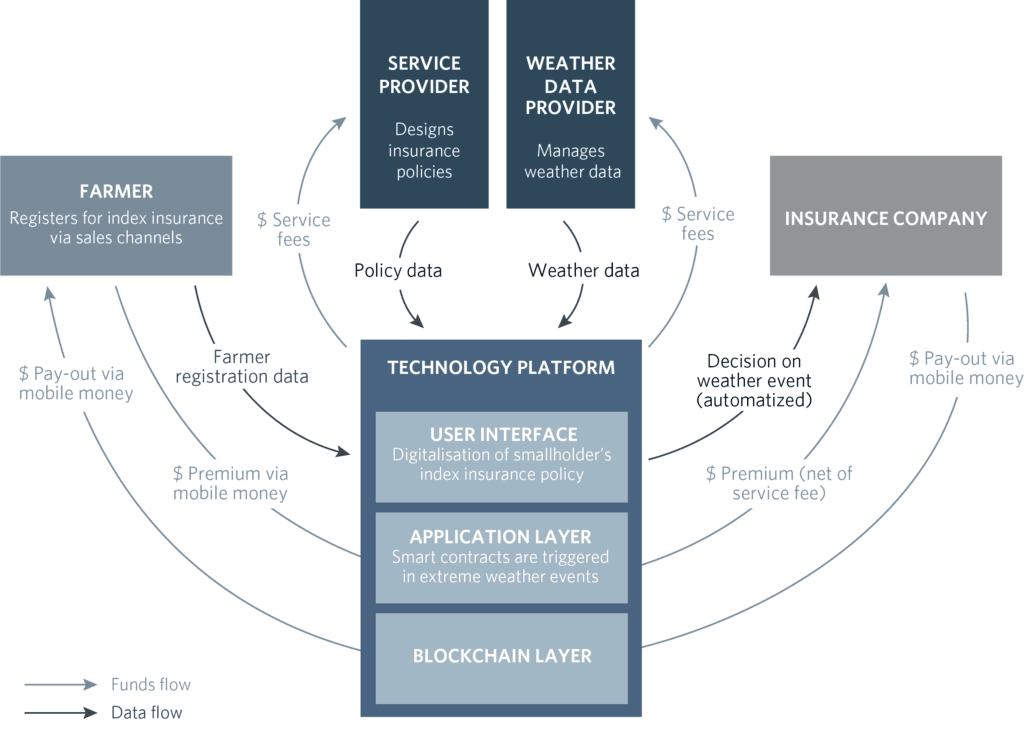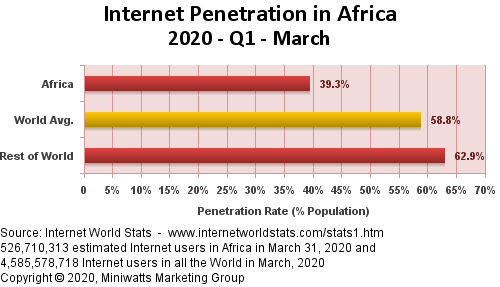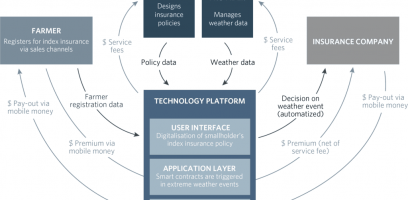In my previous posts we have discussed the fundamentals of blockchain technology and the potential impact of blockchain solutions and crypto currencies in Global South countries. We also identified three key challenges that need to be addressed before we can establish inclusive and participatory technology driven solutions from within the Global South, rather than originating from the Global North. These key challenges being: a lack of education in technology, a lack of local job opportunities in tech and a lack of access to technology. It is easy to identify these issues. Solving them is anything but. Before we look more thoroughly into these challenges, I would like to analyse a use case of blockchain technology that has been launched recently, as it exemplifies beautifully the power of blockchain and the way in which it can be applied to drive social development.
Use case: blockchain based humanitarian solution
I have already briefly mentioned this example in my post ‘the (potential) power of blockchain’. In this exciting use case of blockchain technology application for good, we see a Global North organisation; Etherisc, which provides blockchain technology solutions, team up with ACRE Africa, one of the largest insurance service providers for agricultural micro insurance, to deliver accessible and affordable crop insurance for smallholder farmers across Africa. According to Etherisc, currently available crop insurance in Africa is expensive and there is little trust in traditional insurers due to delayed or absent claim pay-outs, as well as a lack of transparency on the data used to determine the height of pay-outs. A study conducted together with the Global Innovation Lab for Climate Finance found that the use of Etherisc’s blockchain technology would reduce the costs required to issue a policy by up to 41%. For farmers, this could reduce premium costs by up to 30% and claims would be paid out much faster. In return this allows farmers to provide more crops, such as our coffee beans that we cherish so much here at Coffee over Data, and be rewarded for them more fairly.

A brief overview of the process as described in the study is as follows:
- ACRE Africa issues the insurance, processes the premium payments, and manages the distribution of the product and customer care. It also collects and manages weather data.
- An application layer, developed by Etherisc, provides the smart contract infrastructure on the blockchain layer where the user interface is built.
- This user interface, built by Sprout Insure, registers the insurance policies as smart contracts on the blockchain. This will secure payment processing, farmer data, and policy information ultimately reducing transaction costs.
- The farmer registers for insurance through a scratch-card attached to a bag of seeds by paying a premium via mobile money. Once an extreme weather event occurs the smart contract is triggered. The technology platform will pay out the smallholders using a duplicate risk pool, created to prove the concept of faster pay-outs.
- Local insurance companies will then reimburse the pay-outs.
This use case is a prime example of how organisations can team up to provide sustainable and social development solutions. However, it is not truly inclusive or participatory in nature. The fundamental technology is built and provided by a European organisation and the study on which the business case for the solution is built was conducted by organisations founded in the Global North. While we should not overlook the importance of working together with local partners when addressing issues in a given region, which could be considered inclusive, we also have to acknowledge that much work needs to be done before such studies and solutions can be considered truly participatory. Ultimately, locals need to be at the forefront of any solution being developed. Not only does this empower locals and give them agency over their own future, it also ensures that locals are involved throughout the entire decision making process prior and during the development phase of a particular solution. Additionally, they need to drive its maintenance and evaluation, in order to safeguard the sustainability of the solution and continued support by locals.
In the use case of Etherisc and ACRE Africa we do not see this reflected in the development and launch of the blockchain solution at first glance, though further research could provide a more detailed picture of the extent of local inclusivity. Ultimately, the question that we are left with in our journey throughout this blog is how do we address the fundamental issues so that we can build participatory solutions? In order to analyse this question I would like to provide a brief, yet in-depth, view of the current state of these issues and what is already being done to address them.
Participatory technology education
In one of my recent blog posts two examples of online learning platforms were mentioned: Coursera and edX. Granted, such platforms do open up valuable educational resources to a much larger part of the world, but this means they also cater to a wide variety of users and cannot cater to cultural differences in a meaningful way. In a 2015 UNESCO report ‘Rethinking education: towards a global common good’ Irina Bokova, Director-General of UNESCO, highlighted that ‘societies everywhere are undergoing deep transformation, and this calls for new forms of education to foster the competencies that societies and economies need’. Education must find ways of responding to such challenges, taking into account multiple worldviews and alternative knowledge systems, as well as new frontiers in science and technology such as the advances in neurosciences and the developments in digital technology (UNESCO, 2015).
As such, new educational tools and programs might have to be developed in order to reform education in a way that is inclusive for societies and cultures that have been overlooked in traditional education. Encouragingly, such tools and programs are becoming more and more commonplace. Take eLimu, for example, an organization that provides innovative digital educational content and programs in East Africa that are designed specifically for African youth (eLimu, 2021). Other custom made solutions are developed as well, such as mobile schools that help reach nomadic groups in Africa and those without access to technology to learn online (One, 2015). Other examples of initiatives to grow tech talent on the continent like recruiting and training firms Decagon, Gebeya and Semicolon, as well as Moringa School for technology have all seen huge growth in demand for their services in the last few years (Adegoke, 2021).
I think the future will depend on the skills we are developing. Our ability to produce software, applications and tools is still undeveloped, and we cannot lose the opportunity to create them ourselves — Nii Quaynor
Solutions such as these that take into account the challenges of local communities in Africa are desperately needed if we are to tackle the issue of tech education and its availability in the region. Studies indicate that digital infrastructure is used more in regions where the literacy rate is higher. For instance, in 2010, the adult literacy rate in high-income countries was 98.67%, while that of the low-income countries was 57.5%. For the same period, we observe that internet and mobile phone users outnumbered their corresponding value in low-income countries. While there does not seem to be concrete evidence that –a lack of– education directly affects the growth of technology in a country, we also cannot deny the implications of the above figures (Donou-Adonsou, 2019). This brings us to our following challenge.
Access to technology
As mentioned in my case study on Africa post,  internet penetration in Africa was at 18 percent in 2016, which was significantly lower than the global average of 30 percent, while North America and Western Europe were around 80 percent at the time. However, development has not been at a standstill. According to Internet World Statistics Africa currently sits at an average of almost 40 percent internet penetration, with a current global average of 58 percent. While these statistics are encouraging, they also indicate that the gap between Africa and the rest of the world is not changing as fast as other regions and that the gap is widening. This trend has been noticed by Nii Quaynor as well, who is known as the ‘father of the internet’ in Africa as board chairman of the National Information Technology in Ghana, and director of the Internet Society in Ghana.
internet penetration in Africa was at 18 percent in 2016, which was significantly lower than the global average of 30 percent, while North America and Western Europe were around 80 percent at the time. However, development has not been at a standstill. According to Internet World Statistics Africa currently sits at an average of almost 40 percent internet penetration, with a current global average of 58 percent. While these statistics are encouraging, they also indicate that the gap between Africa and the rest of the world is not changing as fast as other regions and that the gap is widening. This trend has been noticed by Nii Quaynor as well, who is known as the ‘father of the internet’ in Africa as board chairman of the National Information Technology in Ghana, and director of the Internet Society in Ghana.
However, he has also seen encouraging trends in recent years, albeit not quickly enough to keep up with the rest of the world, due to a lack of investment in local technology hubs.
We are making progress considering how we were two decades ago, but globally, the world is moving faster and the digital divide is increasing — Nii Quaynor
National governments in Africa have largely left the development of digital infrastructures in private hands and many commercial organisations and non-profits alike have attempted to tackle this challenge, which has led to greater political commitment as well, due to the expectation of larger foreign investments (Al Jazeera, 2016). One project where the private sector combined forces with a non-profit organisation was Citizen Connect in Namibia, a joint venture between the MyDigitalBridge foundation and Microsoft. They succeeded in bringing broadband connectivity to 28 rural schools in Northern Namibia. The intention of the pilot was to provide a blueprint for broadband internet connectivity countrywide (Adaptrum, 2017).
There are many more examples of initiatives to increase the access to technology across the continent and the future looks bright in that regard. However, this does not solve the underlying issue entirely. For instance, once a local African has been educated and has access to digital resources, who is to say they will not find their fortune outside the continent, or perhaps be poached by international companies?
Job opportunities
Due to the lack of suitable education resources and programs as well as the relatively low internet penetration, Africans have not been able to develope the ability to produce enough software, applications and tools to give economies the dividends they sorely need in order to bridge the gap with the rest of the world, according to Nii Quaynor. He also argues that this has led to a situation where only the richest population benefit from technology development (UN, 2017). Consequently, when there is talent that has been able to be educated in technology, they are more inclined to look for work outside Africa or work for international companies remotely, due to the lack of opportunities locally (Adegoke, 2021).
While local entrepeneurs such as Michael Kiberu Nagenda who we met in my previous blog post, as well as training and recruitment companies such as the ones I mentioned above play a key role in preserving talent locally, governments must also commit to building a healthy business environment where local start-ups can thrive. Good governance will ensure a solid foundation for adopting digital technologies and more effectively addressing inequalities (UN, 2017).
Conclusion and reflection
Throughout my blog post series we have discussed the promising benefits of blockchain technology for the Global South and Africa in particular. We have identified three key challenges that need to be address before we can work towards a world wherein locals can be empowered to benefit from such technologies, however. Currently, on average, they do not have the resources or agency to access this technology and benefit from it, with the exception of the rich elite. While these challenges are difficult to overcome, we have also seen that for each challenge, numerous examples exist of entrepreneurs, private companies, non-profits and local talent who have taken up these challenges.
As a student of Communication for Development I initially wanted to embrace new technologies to challenge traditional practices and standards. Throughout this blog journey, however, I have come to acknowledge that we must first ensure that the playing field is levelled, which has influenced the direction that my research has taken. While I still very much believe in the potential of blockchain technologies and I encourage and applaud all initiatives taken place in that field, we must also build these technologies from the ground up in a participatory manner. Meaning that locals must be provided with the tools and resources to empower themselves to take on these fundamental challenges. This is not to say there is not a large role for international companies, non-profits and entrepreneurs in these endeavours. We have seen many examples where joining forces can lead to great success.
I wanted to make sure that for each challenge I also mention an example of the challenge being addressed, or even overcome, since statistics and facts without proper context can paint a bleak picture of the current state and future of technology development in Africa. In fact, I have come to believe that Africa can ultimately lead the way in developing new and innovative technologies, as they are in a position to build such solutions from the ground up. This allows them to address fundamental issues that I have not had the opportunity to discuss in this blog series, such as the lack of women in technology, as well as existing biases in technology. I envision a future where Africa not only has bridged the technology gap, but will surpass the Global North in many aspects. After all, it is for good reason that many African countries are at the forefront of adopting blockchain technologies such as crypto currencies!
Works Cited
Adaptrum. Project: Citizen Connect. Using Adaptrum’s ACRS2.0 to rapidly build a rural broadband network in remote parts of Namibia, 2017.
Adegoke, Y. The truth about Africa’s tech talent shortage. Rest of world, 2021.
A technology revolution in Kenya’s schools. (2013). Retrieved October 21st, 2021, from Al Jazeera: https://www.aljazeera.com/news/2013/7/20/a-technology-revolution-in-kenyas-schools.
Climate Change Finance Lab. (2019). Climate risk crop insurance. Retrieved November 2nd, 2021, from Climate Change Finance Lab: https://www.climatefinancelab.org/project/climate-risk-crop-insurance/.
Donou-Adonsou, F. Technology, education, and economic growth in Sub-Saharan Africa, Department of Economics & Finance, John Carroll University, 2019.
Eleni Mourdoukoutas. (2017). Digital revolution holds bright promises for Africa. Turning a digital divide into dividends will require efforts. Retrieved November 7th, 2021 from UN.org: https://www.un.org/africarenewal/magazine/december-2017-march-2018/digital-revolution-holds-bright-promises-africa.
Etherisc teams up with Chainlink to deliver crop insurance in Kenya. (2020). Retrieved October 28th, 2021, from Etherisc: https://blog.etherisc.com/etherisc-teams-up-with-chainlink-to-deliver-crop-insurance-in-kenya-137e433c29dc.
Internet: Africa starts to open its window to the world. (2016). Retrieved October 10th, 2021 from Al Jazeera: https://interactive.aljazeera.com/aje/2016/connecting-africa-mobile-internet-solar/internet-connecting-africa.html.
Internet Users Statistics for Africa. (2020). Retrieved October 20th, 2021 from Internet World Stats: https://www.internetworldstats.com/stats1.htm.
Mobile schools are catching up to on-the-go girls in Kenya. (2015). Retrieved November 1st, 2021, from One.org: https://www.one.org/us/blog/mobile-schools-are-catching-up-to-on-the-go-girls-in-kenya-2/.
She Leads Africa. (2021). 5 Innovative Initiatives Transforming Education in Africa. Retrieved November 1st, 2021, from She leads Africa: https://sheleadsafrica.org/education-in-africa/.
UNESCO. Rethinking Education. Towards a global common good? United Nations Educational, Scientific and Cultural Organization, 2015.


